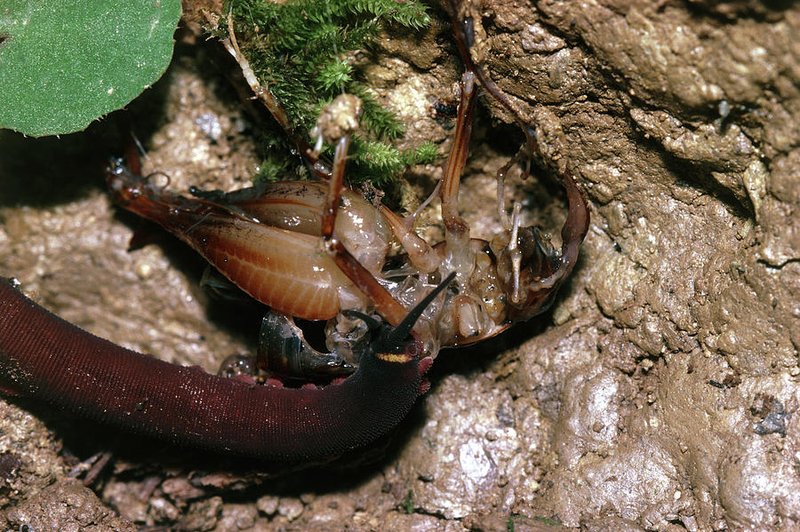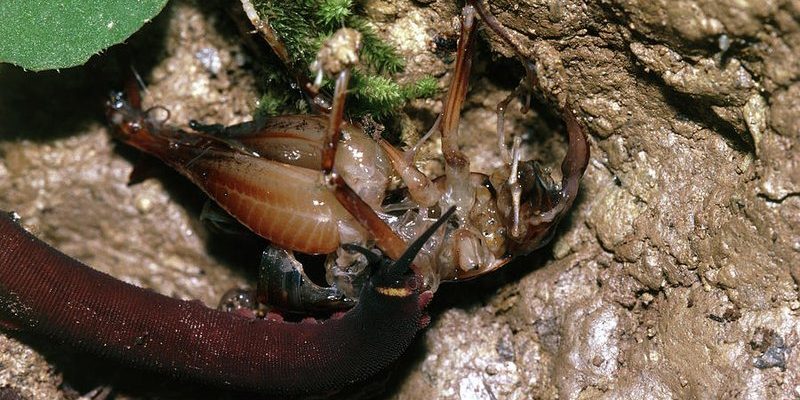
Honestly, feeding velvet worms isn’t just about tossing in any old insect. You want to provide a balanced diet that mimics their natural environment for them to thrive. Think of it like preparing a gourmet meal: the right choice of ingredients can make all the difference in health and happiness. Let’s dive into some safe prey options that can keep your velvet worms satisfied and well-nourished!
Understanding the Velvet Worm Diet
Velvet worms are carnivorous, primarily preying on small insects and other soft-bodied animals. In the wild, they mainly hunt by using a sticky slime to capture their prey. It’s important to understand their natural diet when you’re feeding them in captivity.
Typically, they feast on small invertebrates like beetles, termites, and small slugs. So, providing something similar in captivity is key. Their soft bodies require soft food, making it crucial to avoid anything hard or crunchy that could damage their delicate bodies. You might be wondering how to replicate this at home, but don’t worry—there are plenty of safe options available!
Safe Prey Options for Velvet Worms
When it comes to feeding your velvet worms, you’ll find that there are several safe prey options. Here are some of the best choices:
- Fruit Flies: Commonly known as Drosophila, these tiny flies are an excellent food source for velvet worms. They are small, easy to catch, and nutritious.
- Mealworms: While not ideal for every feeding, young mealworms can be a soft and delectable treat. Make sure they are small enough for your velvet worm to manage comfortably.
- Crickets: Small crickets are great too, but you’ll need to ensure they’re quite juvenile, as larger crickets can be too tough.
- Springtails: These tiny, soft-bodied critters can be a great addition to your velvet worm’s diet, replicating the natural environment.
Each of these options provides nutritional variety and can help enrich the velvet worm’s experience in captivity. Just like us, they enjoy variety in their meals!
How to Feed Velvet Worms
Here’s the thing: feeding velvet worms isn’t as simple as dropping food in their habitat. You want to be careful and methodical. Start by preparing the feeding area, making sure it’s clean and free of leftover food from previous meals.
1. Choose Your Prey: Select one of the safe options mentioned above, making sure it’s appropriately sized for your velvet worm.
2. Prep the Food: If you’re using fruit flies, you can simply sprinkle some onto the substrate. For mealworms or crickets, you may need to cut them up to ensure they’re small enough.
3. Introduce the Prey: Place the food gently in the enclosure. Avoid sudden movements that might startle your velvet worm.
4. Monitor Behavior: Keep an eye on your velvet worm as they hunt. It’s fascinating to watch them engage with their food!
Feeding time can be a wonderful opportunity to observe your velvet worms in action, showcasing their natural hunting behavior.
Common Mistakes to Avoid
Even seasoned velvet worm owners can make mistakes. Here are some common pitfalls to avoid when feeding them:
– Overfeeding: Just like us, velvet worms can get sluggish if they eat too much. Stick to a feeding schedule and offer food every few days.
– Feeding Incorrectly Sized Prey: If the prey is too big, it could harm them. Always err on the side of smaller choices.
– Neglecting Cleanliness: Leftover food can cause foul odors and attract unwanted pests, so be sure to remove uneaten prey after a day or two.
Keeping these tips in mind will help you create a safe and healthy environment for your velvet worms.
Supplements and Nutritional Additions
Sometimes, a little extra boost can make all the difference. While velvet worms thrive on their standard diet, consider adding nutritional supplements to enhance their health.
– Calcium Supplements: Just a pinch can help strengthen their exoskeleton, especially if you’re feeding them mainly soft-bodied prey.
– Vitamin Dust: Lightly dusting their food with vitamin powder can provide essential nutrients that might be lacking in their diet.
– Moisture Sources: Velvet worms thrive in humid environments, so misting their habitat occasionally will help them stay hydrated, especially if you’re using dry prey like mealworms.
It’s like adding a side salad to your meal—every little bit helps!
Where to Source Prey
Finding the right prey for your velvet worms can be a challenge. Here are a few options:
– Pet Stores: Many local pet stores carry small feeder insects like fruit flies, mealworms, and crickets. It’s a good idea to ask about their care methods.
– Online Retailers: There are several reputable online stores specializing in feeder insects. Ensure they provide quality products and good shipping practices.
– Home Cultivation: If you’re feeling adventurous, you might even consider breeding your own fruit flies or mealworms. It’s a fun project, and you’ll have a constant food source!
Just remember to research and choose the best sources to ensure your velvet worms receive high-quality nutrition.
Feeding velvet worms in captivity can feel daunting at first, but with the right knowledge and tools, it becomes easier and even enjoyable. By choosing safe prey options, creating a balanced diet, and avoiding common pitfalls, your velvet worms will thrive and bring you plenty of joy.
As you continue this journey, take the time to observe their behaviors and preferences. Just like with any pet, building a strong bond and understanding their needs will lead to a rewarding experience. Happy feeding, and enjoy the fascinating world of velvet worms!

